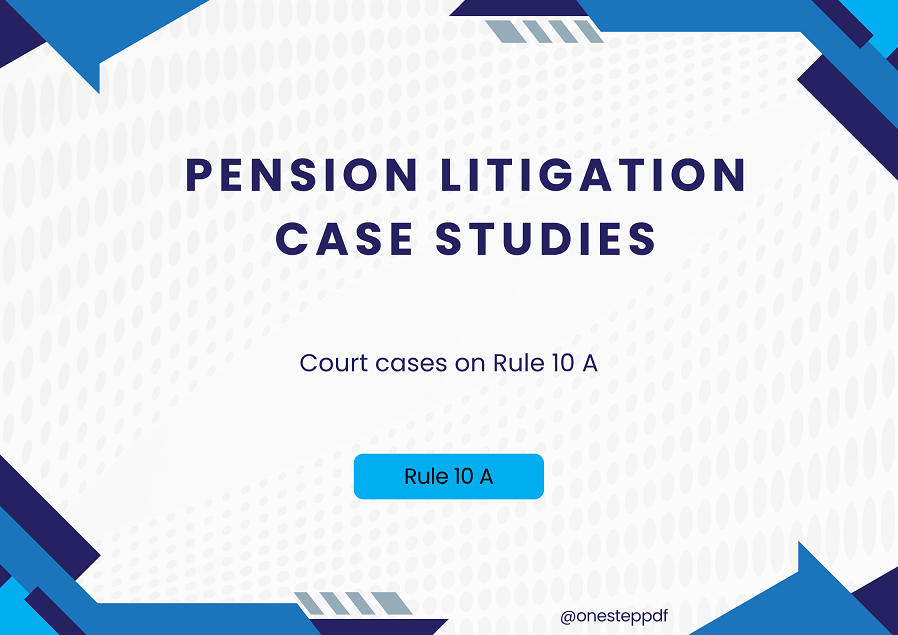| PDF Title | Pension Litigation Case Study – Court cases on Rule 10 A |
| Category | |
| Order no | Rule 10 A |
| Posted By | Admin |
| Posted On | Aug 18, 2025 |

Get PDF in One step
| PDF Title | Pension Litigation Case Study – Court cases on Rule 10 A |
| Category | |
| Order no | Rule 10 A |
| Posted By | Admin |
| Posted On | Aug 18, 2025 |

4. Court cases on Rule 10 A
4.1 Rule 10A of the Central Civil Services (Commutation of Pension) Rules, 1981, is a central point of contention in many court cases concerning the restoration of commuted pension. This rule stipulates that the commuted portion of a pension shall be restored after 15 years from the date the reduction of pension due to commutation becomes operative.
4.2 Key court cases and the issues surrounding Rule 10A:
1. “Common Cause” Society and Others vs. Union of India (1986 Hon’ble Supreme Court Judgment):
a) This is a landmark judgment that significantly shaped the policy on commuted pension restoration.
b) Before this judgment, there was no provision for the restoration of commuted pension. Pensioners who commuted a portion of their pension had that portion reduced for their entire lives.
c) The Hon’ble Supreme Court, in this case, considered factors like interest rates, mortality rates, and the commutation table in existence in 1986. The Hon’ble Court directed the Union of India to restore the commuted portion of the pension after 15 years from the date of commutation. This was viewed as an act of goodwill and relief for pensioners.
d) The Hon’ble Court noted that while the commuted amount might be recovered within a shorter period (petitioners argued around 12 years), the 15-year period accounted for the “risk factor” (the possibility of the pensioner dying before the commuted amount is fully recovered).

2. Forum of Retired IPS Officer (FORIPSO) vs. Union of India and Another (2019 Hon’ble Delhi High Court Judgment, upheld by Hon’ble Supreme Court):
3. Highlights of the recent Demands:
Central Administrative Tribunal (CAT) Cases: Many individual pensioners and associations had filed and continue to file cases in various Hon’ble CAT Benches challenging the 15-year rule, seeking a reduction to 12 years. Some CAT benches have, at times, granted interim reliefs but later on stayed by higher courts, reaffirming the 15-year rule based on settled law.
Demands by Pensioner Associations: Various Pensioner bodies and staff unions consistently advocate for the restoration period to be reduced to 12 years, citing increase in life expectancy and the faster recovery of the commuted amount. The NC-JCM (National Council of Joint Consultative Machinery) has suggested including this as a term of reference for the 8th Pay Commission.
Government’s Stance: The Government has maintained that the 15-year period is based on expert recommendations and takes into account various factors, including the risk factor. The last two Pay Commissions (6th and 7th) did not recommend a change to the 15-year restoration period.
4.3 Despite ongoing demands for a shorter restoration period, the legal position, as of now, remains at 15 years.
Download PDF